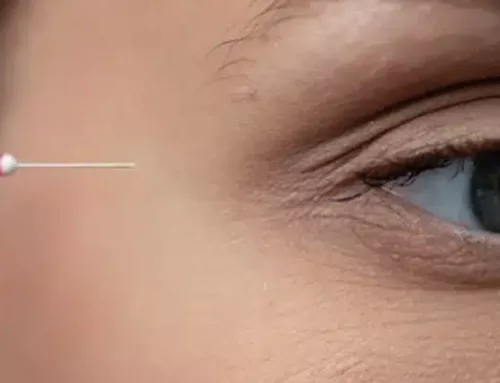A Deep Dive on Melasma
Below the Skin’s Surface
Melasma can produce visible effects on the skin’s surface, usually in the form of hyperpigmentation. However it may surprise you to know that once you notice changes to your skin tone, melasma has already been affecting the deeper layers of your skin.
Skin is comprised of several levels, from the outermost to the deepest: the epidermis, the basement membrane, the dermis, and the hypodermis. Due to the ways melasma influences the skin, it can cause pigment problems as well as skin aging, inflammation and vascular changes. In order to properly combat the effects of this skin condition, we must understand how melasma changes the skin throughout each of its levels.
On The Skin Report podcast, Dr. Simran Sethi, an Internal Medicine doctor and the Founder and Medical Director of RenewMD medical spas, explains the ways that melasma influences the skin throughout each of its layers, so listeners can better understand how to treat this condition. So now, let’s take a deep dive into melasma, and its effects on each level below the skin’s surface.
Melasma’s Effects on Each Skin Level
Epidermis
Melasma starts and predominantly occurs in the most superficial layer of the skin, the epidermis. As the top layer of our skin, the epidermis houses our pigment producing cells, called melanocytes.
We know that the condition causes the melanocytes to produce excess pigment, leading to visible areas of skin hyperpigmentation. However, treating melasma as soon as possible increases the likelihood of controlling the pigment production within the epidermis.
On the other hand, failure to treat melasma right away can lead to more problems. As the epidermis becomes saturated with excess pigment, it leaks into the lower levels where it becomes far more difficult to treat.
Basement Membrane
If melasma is left untreated, excess pigment from the epidermis can easily seep into the lower skin layers. The skin layer directly below the epidermis is called the “basement membrane.” It separates the epidermis from the dermis.
Due to melasmas effect on the skin, the basement membrane becomes weakened. Therefore, excess pigment from the epidermis can easily pass through the basement membrane and reach the dermis.
Once melanin leaks through the basement membrane, it deposits pigment into the deep layer of the skin, the dermis, where it is extremely difficult to treat.
Dermis
Melanin that is produced in the epidermis and seeps through the basement layer will then reach the deepest layer of the skin, the dermis.
Melanin trapped within the dermis layer will appear darker. Unfortunately, melanin within the dermis is also far more difficult to reach and remove, even with the help of advanced skin treatments.
Melasma left untreated will cause pigment to continue to build and deposit in the dermis, and excess pigment within the dermis is more resistant to elimination. This is an important concept to understand, as untreated melasma can leave long-lasting effects on the skin if ignored for too long. Therefore the sooner you begin treating your melasma, the more successful your treatments will be.
HypoDermis
The hypodermis consists of the nerve cells, blood vessels, fats, and connective tissues beneath the skin. Studies have also shown melasma to affect inflammation and blood vessels below the skin’s surface. Melasma lesions have been shown to produce an increase in the number, size and density of blood vessels. Studies also suggest that melasma lesions have a greater presence of proteins that stimulate blood vessels, and arachidonic acid which increases melanocyte activity.
Melasma’s effects on vasculature and inflammation can contribute to the darkened appearance of melasma hyperpigmentation in darker skin tones. However, additional skin care ingredients can help to reduce the pigmentary changes related to excess vascularity and inflammation.
Treating Melasma at the Skin’s Surface
Treating melasma early can help to reduce its effects and prevent the condition from becoming even more difficult to treat. So how should people with melasma care for their skin before it is too late?
First, begin with providing appropriate care to the skin barrier. The skin barrier is the outermost layer of the skin that protects it from environmental damage. People with melasma should treat their skin barrier gently, without using harsh cleansers that strip the skin of natural oils. A gentle, hydrating cleanser can do wonders in helping to restore the skin’s lipid barrier and nourishing the skin that has been weakened by melasma.
Skin with melasma behaves like older skin, causing it to become drier. This dry skin can produce a build up of flaky dead skin on its surface, so some exfoliation is necessary to remove this dead layer and to help other products penetrate the skin. However, exfoliation should occur through gentle practices. People with melasma should avoid chemical exfoliants like glycolic or lactic acid exfoliants, as these will strip the skin and disrupt its natural moisture balance and barrier. They should also avoid overuse of mechanical exfoliants, and only utilize very fine mechanical exfoliants once a week.
Finally, moisturization is very important for skin with melasma. Melasma causes the skin to become more aged, and disruptions in the skin barrier function will lead to increased pigment production. Therefore, keeping the skin hydrated and replenishing with lipids is essential for nourishing and protecting skin with melasma.
Listen to The Skin Report podcast to learn more about melasma and healthy skin treatments for people of color. And be sure to tune in next week, as we’ll be covering treatment methods for dermal melasma pigmentation.







